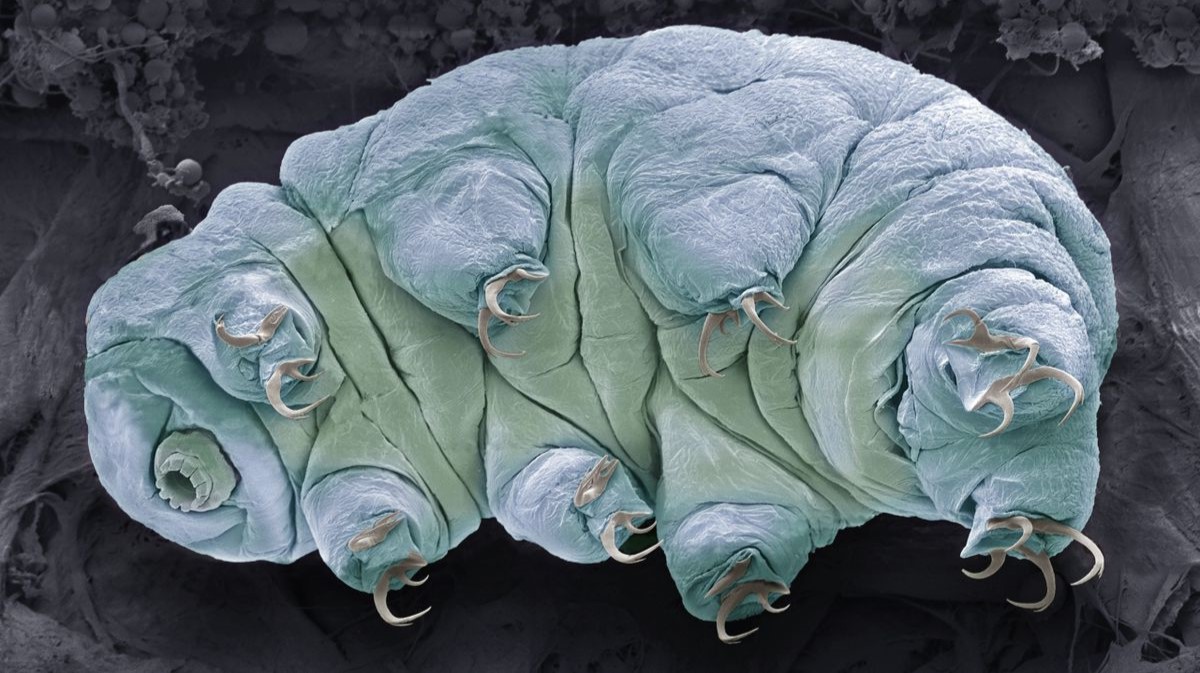
Are tardigrades immortal? These tiny creatures, often called water bears, have fascinated scientists and curious minds alike. Known for their incredible resilience, tardigrades can survive extreme conditions that would be fatal to most other life forms. They can endure freezing temperatures, scorching heat, and even the vacuum of space. But does this mean they live forever? No, tardigrades are not truly immortal. While they can enter a state called cryptobiosis, where they essentially shut down and can survive for decades, they eventually die like all living organisms. Their remarkable survival skills make them one of nature's most intriguing creatures, but immortality remains out of reach. Let's dive into 15 fascinating facts about these nearly indestructible micro-animals.
What Are Tardigrades?
Tardigrades, also known as water bears or moss piglets, are microscopic creatures that have fascinated scientists for years. These tiny organisms are renowned for their resilience and unique survival abilities.
-
Tardigrades are less than 1mm long, making them nearly invisible to the naked eye.
-
They have eight legs, each tipped with tiny claws, which help them move through their environments.
-
Tardigrades were first discovered in 1773 by German zoologist Johann August Ephraim Goeze.
Tardigrades' Extreme Survival Skills
Tardigrades are famous for their ability to survive in extreme conditions that would be fatal to most other life forms. This has led many to wonder if they are, in fact, immortal.
-
Tardigrades can survive temperatures as low as -328°F (-200°C) and as high as 304°F (151°C).
-
They can endure pressures up to six times greater than those found in the deepest ocean trenches.
-
Tardigrades can withstand radiation levels that are 1,000 times higher than what would kill a human.
Tardigrades and Space
One of the most astonishing facts about tardigrades is their ability to survive in the vacuum of space. This has been demonstrated through various experiments.
-
In 2007, tardigrades were sent into space on the European Space Agency's FOTON-M3 mission and survived the harsh conditions of outer space.
-
They can endure the vacuum of space, extreme temperatures, and intense solar radiation without any protection.
Tardigrades' Cryptobiosis
Tardigrades have a unique survival mechanism called cryptobiosis, which allows them to enter a state of suspended animation when conditions become unfavorable.
-
During cryptobiosis, tardigrades lose almost all their water content and curl up into a tiny ball called a tun.
-
In this state, their metabolism drops to 0.01% of its normal rate, allowing them to survive without food or water for decades.
-
Tardigrades can rehydrate and return to their active state even after being in cryptobiosis for over 30 years.
Are Tardigrades Truly Immortal?
While tardigrades possess incredible survival abilities, they are not truly immortal. They can still die from old age, predation, or other factors.
-
Tardigrades have a lifespan of a few months to a few years, depending on their environment and species.
-
They are susceptible to environmental changes, such as pollution and habitat destruction, which can impact their survival.
-
Tardigrades can be killed by extreme conditions if they are not given enough time to enter cryptobiosis.
Tardigrades in Popular Culture
Due to their remarkable abilities, tardigrades have captured the imagination of people worldwide and have appeared in various forms of media.
- Tardigrades have been featured in TV shows like "Star Trek: Discovery" and video games like "The Sims 4," where their resilience and unique characteristics are highlighted.
The Resilience of Tardigrades
Tardigrades, often called water bears, are fascinating creatures. Their ability to survive extreme conditions, from boiling heat to the vacuum of space, makes them unique. These microscopic animals can enter a state called cryptobiosis, where they lose almost all water and stop all metabolic activities, essentially becoming indestructible.
Despite their resilience, tardigrades aren't truly immortal. They can still die from old age, predators, or environmental changes. However, their survival skills are unmatched in the animal kingdom. Scientists continue to study these tiny wonders, hoping to unlock secrets that could benefit medicine and space exploration.
Understanding tardigrades gives us insight into life's adaptability. Their existence challenges our perception of life's limits, showing that even the smallest creatures can hold the most incredible secrets. So, next time you think about survival, remember the mighty tardigrade.
Was this page helpful?
Our commitment to delivering trustworthy and engaging content is at the heart of what we do. Each fact on our site is contributed by real users like you, bringing a wealth of diverse insights and information. To ensure the highest standards of accuracy and reliability, our dedicated editors meticulously review each submission. This process guarantees that the facts we share are not only fascinating but also credible. Trust in our commitment to quality and authenticity as you explore and learn with us.


